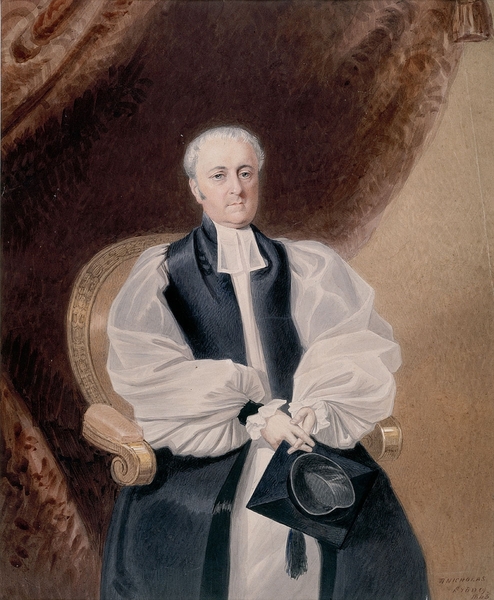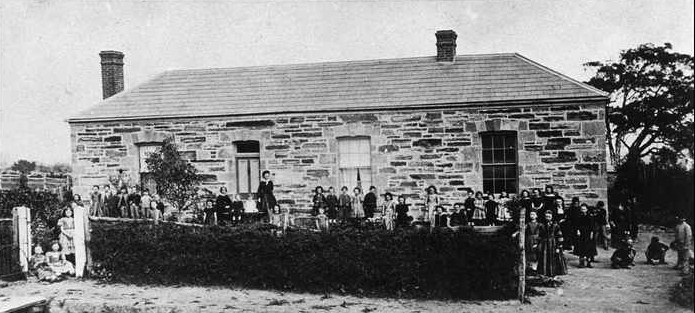The words public and private have been used in attempts to describe the ownership, governance and purposes of Australian schools and education from close to the beginnings of British colonisation in 1788. They are concepts that had little meaning for Indigenous society before, and for some time after initial colonisation.

Image courtesy of FreeDigitalPhotos.net
The meanings of these words shift over time. Nor do public and private schools necessarily describe the same kinds of institutions in Australia, the United Kingdom, the United States or Canada. Nevertheless public, based on the Latin publicus has a primary set of meanings based around “the people”, usually conceived as a whole, sometimes as the nation. Publicus may also be about that which is accessible to all people—or citizens at least. Similarly the Latin privatus as the basis of private, was initially about withdrawal from public life. It is associated with individuals and groups detached from civic life. It can also be about behaviour and characteristics kept or removed from public knowledge or accountability.
Such lexically based definitions are only a starting point for understanding the use of these words. For example, some historians regard the rise of the private as an important moment in the modern history of gender and the family. Emergent middle class families through the late eighteenth and into the nineteenth century were increasingly thought of as private. The association of middle class women with the private or domestic sphere, leaving men to the public, affected private schooling. If middle and ruling class girls were to be educated in schools at all, it would occur in private schools and academies. In the process, private schooling reinforced middle class familial values, including a curriculum based on the accomplishments (see glossary below) that were valued in private and familial life.
From the early nineteenth century therefore, the words have described different kinds of institutions and education-related behaviours. In some periods public has been thought of as associated with responsible and virtuous civic behaviour. In other periods the connotations have been less positive.
Especially salient for Australia (and the United States) is the association between the emergence of public schooling and the interests of Protestant, and then an increasingly secular middle class. Public institutions may in fact, be marked by restricted access. For example, public schools in Australia have restricted access at different periods to young people on the grounds of their designated racial identities, and their mental or physical disabilities or characteristics. Many Aboriginal children and families experienced prolonged periods of exclusion from public schools in most Australian colonies and states. In the process public schooling was crafted to meet a specific vision of the emerging (white) nation.
A consequence of such a vision meant that other communities, often defined by minority religious or ethno-national characteristics have excluded themselves from public schools. From the 1850s for example, the bishops of the Catholic Church in Australia have insisted that Catholics ought not to attend public schools.
Resulting from the circumstances of their foundations, private schools were and are likely to routinely exclude some youth and their families from enrolment. The reasons and justifications for exclusions vary. Private schools, usually being market aware, often cater to families that have specific private needs of schooling. In the process, such schools may exclude others who are seen to threaten these interests.
“Public“ schools in Australian history
(1) Public schools as schools for the governing class
An early meaning of the word public had to do with the attempt to recreate in the Australian colonies similar institutions that educated boys of the aristocracy and governing classes in England. The great public schools of England in the eighteenth and nineteenth century were grammar schools of the established Church of England that had grown so wealthy and influential as a result of endowments (see glossary) and patronage, that they were described as the great public schools of England. Attendance at schools such as these, Eton, Winchester, Harrow, Rugby and others, usually ensured entrance into the universities of Oxford or Cambridge, and careers in the armed forces and government. These public schools were thought of as enduring national, public institutions in contrast to the often transient private schools of the middle class.
![Collegiate School of Saint Peter, South Australia. Founded as a "greater public school" by the Church of England. [Photo courtesy of State Library of South Australia, B 3097] St Peters](https://dehanz.net.au/wp-content/uploads/2014/01/PP-Saint-Peters-College-c.-1867.jpg)
Collegiate School of Saint Peter, Adelaide. Founded as a “great public school” by the Church of England in 1847. [Photographed in 1867, courtesy of State Library of South Australia, B 3097]
Therefore an early meaning of the word public in relation to schooling in Australia had to do with a school for boys, usually but not always owned by a church, whose aim and role was to produce the governing class, including the owners of urban and rural wealth. Such schools were not public in one sense, because they were inaccessible to all but a minority of families. They claimed the word public because they considered they produced boys who would be leaders of society, including government. The purpose was arguably an education for the “public sphere” rather than the “private”. Decades later there were similar schools for girls, though not until well into the twentieth century was the idea that girls might routinely aim for a presence and career in the “public sphere” accepted.
(2) Public schools as Church of England schools

Bishop Broughton was a great defender of the idea that Church of England schools should be the only public schools in New South Wales [Portrait by William Nicholls, 1843, courtesy State Library of New South Wales, DG P3/18]
This use of the word public occurred with the appointment of the clergyman, Thomas Reddall as Director General of the “Government Public Schools” of the colony in 1824. The transitory high point of early colonial public schools being Church of England schools came with the establishment of the Church and School Corporation that lasted from 1826 to 1833. In theory the Church and School Corporation was to be supported by a grant of one seventh of the Crown lands in New South Wales. Opposition to the Corporation included other religious denominations such as the Wesleyans (Methodists), Presbyterians and Roman Catholics. They insisted that their schools had as much right to assistance from public or government funds as those of the Church of England, in fact challenging the assumed authority and certainty of that Church that it was a public institution as opposed to being but one religious denomination among many.
Early archdeacons and bishops of the Church of England in the Australian colonies, including Thomas Hobbes Scott and William Broughton fought to sustain the idea that a public school should be a Church of England school, but the 1830s was the last decade that the argument retained force.
Nevertheless in all colonies for some time most denominational schools (see glossary) were part of a public system of schools because they were assisted by public funds. Government appointed boards of education distributed public funds and imposed a limited number of public responsibilities on the denominational schools that were assisted.
(3) Public schools as non-denominational, government-funded and controlled schools
From the 1830s there were attempts to produce “National” schools in New South Wales. Unlike the Church of England “national schools” in Britain, these colonial schools would not be controlled by churches. The phrase National school rather than public school usually described the new foundations. In Western Australia they were usually called colonial schools.

One of the impressive new government public schools of the late nineteenth century, Cleveland Street Public School, Sydney [Photo: Henry King, courtesy State Library of New South Wales SPF/442]
The first colony to withdraw government funding to denominational schools was South Australia in 1851. In that sense, the first complete alignment of publicly-assisted schools with non-denominational schools occurred in that colony. In the process, the idea of the independent school may have had its origins. New schools, mainly belonging to churches, were no longer dependent on government funding.
Usually on the grounds that dual public funding, of denominational and National schools was wasteful, each colony cut loose the denominational schools and built systems of public education, named as such. This process was dependent on the passing of the so-called “free, compulsory and secular” Education Acts, mainly in the 1870s. In New South Wales, a “public school” system had been established in 1866, but it was only in 1880 that public funding (state aid) to church schools was discontinued. The 1872 Education Act in Victoria was the most thoroughgoing in eliminating even limited denominational religious access to pupils in public schools.
The dominant definition of an Australian public school was set. A public school was a government school, controlled by a state department of education. At best clergy or lay church members for a short period, usually once weekly might attend to instruct pupils on a voluntary basis. The curriculum over time became increasingly secular. Some common Christianity elements survived in public schools through the twentieth century.
“Private“ schools in Australian history
(1) Private schools as ventures owned by individuals and families
In the early days of New South Wales there was not much private in existence. Most of the population was dependent on government to some degree. Where there were private initiatives to set up schools, teachers often sought government assistance, rations for example, and their efforts were likely supervised by Anglican chaplains.

Charlotte Smith’s private school in Willunga, south of Adelaide, c. 1877 [Courtesy State Library of South Australia, B 55417/24]
There was an increasing diversity of such schools over the nineteenth century. They included:
- for the labouring classes, the so-called dame schools, that promised the teaching of “letters” to the children of neighbours when their labour was not needed by their families. The owner-teachers of such schools were often women who needed an income in addition to what their often absent male partners may have provided.
- for the middling classes, sometimes colonial clergymen, without the benefit of incomes from church lands or other endowments took boys, promising an education that sometimes including the classics
- again for the middling classes, for boys and girls separately there were schools founded by men and women that promised the teaching of subjects that changed as rapidly as there was a market for them. Schools for boys could develop a classical curriculum, commercial subjects, or the applied sciences and natural philosophy.
- for the wealthier classes, some schools developed to a considerable size, and were housed in substantial and impressive buildings, such as Whinham College in Adelaide or Julie Vieusseux’s East Melbourne Ladies’ College (1857-1882).

A Church of England denominational school in Dunolly, west of Bendigo in Victoria, c. 1861 [courtesy State Library of Victoria, b36129]
In the post-elementary sector, churches and state governments developed substantial institutions, academies, collegiate schools and public high schools respectively. As the colonial universities began offering credentials of value through public examinations, private schools enrolling older youth followed their syllabuses and entered increasing numbers for public examinations. In the process they opened themselves to public scrutiny. Despite many successful engagements with the process, the public high schools and church collegiate schools were better resourced to succeed in the long term. Many private schools were incorporated into existing church collegiate schools. Some, such as Barker College in Sydney in 1919 and Walford School in Adelaide, as late as 1956, were bought by the Church of England and became Church of England collegiate schools.
A private school therefore initially meant being owned by one person or one family. The school was almost totally dependent on fees and the energies and planning of their proprietor-principals. Most of these schools were short-lived.
(2) Private schools as any schools not run by government
As the idea developed in the late nineteenth century that the only public school was a government or state school, there was a demand for a collective term that grouped all non-public schools. Although the original private schools began to disappear, the term private school did not. Through the twentieth century it began to be applied indiscriminately to a range of different kinds of schools. They included:
- the remaining genuine private schools
- systems of schools developed by churches
- secular schools that were independent of government departments of education
- church owned schools that were governed by independent trusts or councils
The latter two groups, especially the substantial foundations, were described by Sherington, Petersen and Brice (1987) as corporate schools. That term distinguished them from the range of private, small, alternative and parochial church schools. Some corporate schools continued to describe themselves as greater public schools from the English usage.
“Public“ and “private“ in the twenty-first century
The use of the term private, meaning any non-government school is misleading. A relatively poor Catholic parochial school governed by a diocesan Catholic Education Office has very little in common with an exclusive, high-fee, independently governed corporate school.
The description private for all such schools is especially problematic after the 1960s when most non-public or nongovernment schools were once more publicly funded to some degree by governments. At the same time there is some justification for the word’s survival as an economy and society valuing private enterprise, and the legitimacy of private choice between schools, and in the process reinforcing family values and traditions, suggests the importance of private schools to meet such concerns.
The term and process of privatisation was significant in developing public policy, including education, from the late 1970s. It legitimately describes a process by which the ownership and control of public schools is sold or transferred to churches or other entities. The opposite process, the nationalisation of nongovernment schools is barely a detectible occurrence in Australian educational history.
The Australian Bureau of Statistics does not use the term private for the counting and discussion of schools. It uses the names of churches such as Anglican, Catholic, Uniting, Orthodox etc. Its main publication Schools Australia (4221.0) uses the main categories Government and Non-government with the broad subcategories “Catholic” and “Independent”. An obvious problem with these sub-categories are that some Catholic schools are also Independent schools. They are not governed by Catholic Education Offices. Another problem with independent as a category are the connotations of the term independent. In an era of renewed public funding, and the consequent meeting of a limited number of public obligations as a result, and the requirements of other legislation, independent does not describe the circumstances of the sector. Some have argued for the replacement term “publicly-assisted schools”.

Girls and teachers, a Catholic school in Camberwell, Melbourne before 1930 [Photo: V.E. Charnley, courtesy State Library of Victoria, H95.189/12]
Since the 1980s especially, Liberal-National Coalition governments, but often Labor as well, have tended to foster markets of schools, in which parents are expected to exercise their power to choose the school that best suits their family’s circumstances. This may occur within public and nongovernment school sectors, or across them. This development is reminiscent of the mid-nineteenth century National, denominational and private school markets of that era.
Because public schools in poorer areas of Australian cities and rural areas are usually responsible for educating children from poorer and non-English speaking immigrant families, a social residualisation (see glossary) process has often occurred. Where early in the twentieth century public schools seemed to be overtaking private and corporate schools in reputation and results, in the early twenty-first century the situation is mainly reversed.
In this entry there are several issues that have barely been considered. One is the degree to which public schools are used by families for private purposes, and the reverse. The higher education sector, including technical and further education and the universities, has not been considered. Public and private provision in the pre-school sector also has a long history and remains an issue of contemporary significance given the range of private, community, corporate and government providers.
Public and private are words significant in the history of gender relations and this has profoundly affected the character of different schools for boys and girls.
The defining of public and private in schooling is an active and continuing process. Australia is not alone in this respect.
Glossary
Accomplishments in girls’ education contributed to the making of useful, respectable middle class girls, accomplished in languages, music and other arts. They formed part of a curriculum that reinforced idealised conceptions of acceptable femininity, marriage, child rearing and family life. In the historiography there has been an overdue corrective to the older approach that it was a superficial curriculum, the main focus of which was to assist girls in “husband hunting” (see Theobald, 1996).
Common Christianity is the idea that National and public schools in the Australian colonies could develop curricula based on common or agreed elements of the teachings of the main Christian churches/denominations active in Australia. Unlike the Catholic Church, the Protestant churches mainly reconciled themselves to the proposition from the 1870s to the 1970s.
Denominational school. A school run by one of the Christian churches. The term is mainly used in nineteenth century educational history.
Endowments. Substantial gifts, usually of land and/or capital, that enabled the foundation and/or support of schools.
Established church. Where a church is the official church of the state or nation, then it is an established church. The established Church of England in England had some expectation that it would be the established church in the early Australian colonies. In those circumstances, popular or common schools provided by any established church would likely be public schools.
Residualisation. The process that occurs when some schools attract or are left with unrepresentative shares of students in trouble, poverty or special needs.
Note:
The author of this entry thanks Geoffrey Sherington (University of Sydney) and Tom O’Donoghue (University of Western Australia) for assistance in its writing.
